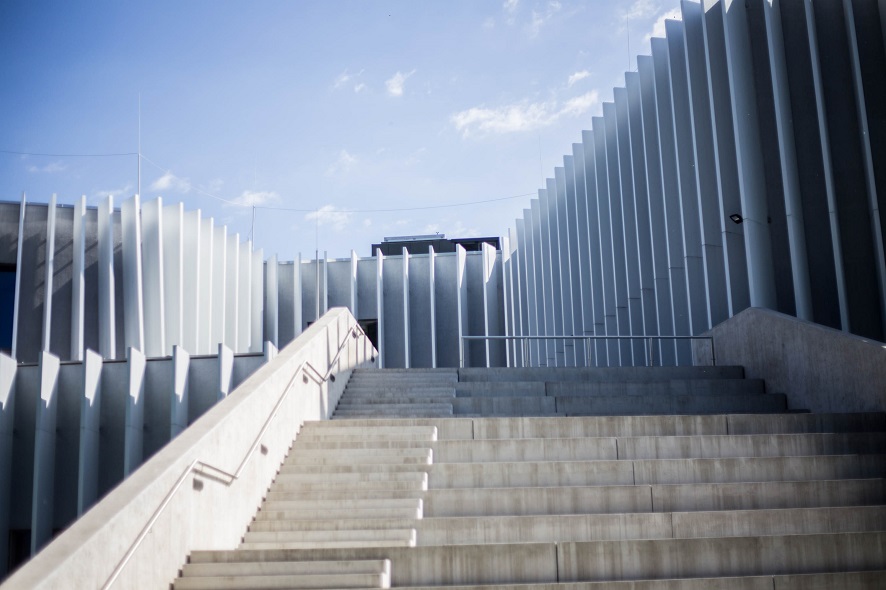This year’s Ars Electronica Festival program has two days dedicated to audible digital artistry. Sonic Saturday on September 9, 2017 and Music Monday on September 11, 2017 will host intensive encounters with sound art, computer music and auditory media art. The driving creative force behind this lineup is the faculty of Anton Bruckner Privatuniversität, which is producing Sonic Saturday for the second year in a row and also playing a big part in curating Music Monday.
We met with Professor Volkmar Klien of the school’s Computer Music and Media Composition program, media artist Se-Lien Chuang, and Professor Andreas Weixler, director of the Computer Music Studio (CMS), to find out what awaits us on Sonic Saturday and Music Monday this year, and also to learn why Anton Bruckner University’s premises are especially well-suited to sound art.
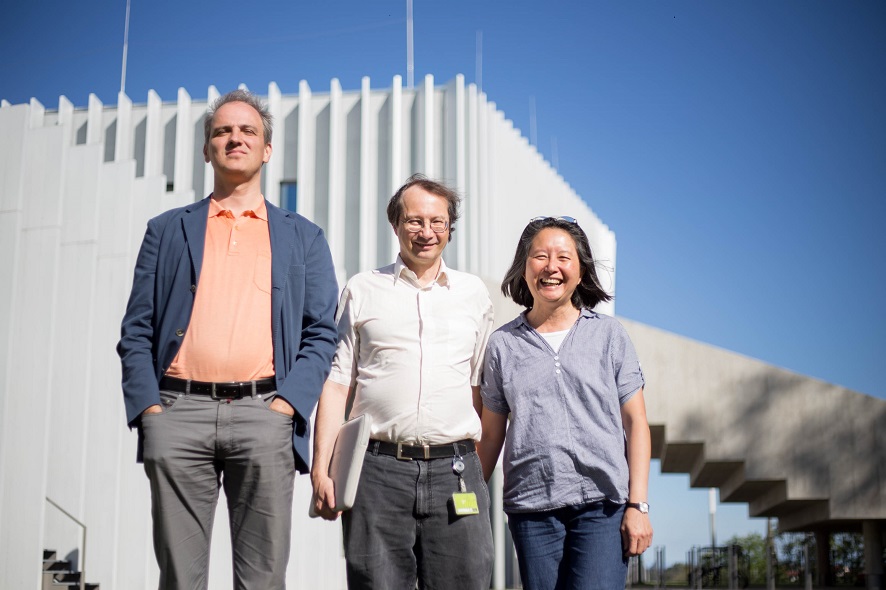
Volkmar Klien, Andreas Weixler and Se-Lien Chuang. Credit: Vanessa Graf
Bruckner University’s two-year-old facility is hosting Sonic Saturday for the second year in a row. What do you have lined up for us?
Volkmar Klien: It’s turned out that Bruckner’s new premises in our building do indeed provide an unsurpassed musical venue for the Ars Electronica Festival. Somewhat in contrast to Music Monday, the program we’re staging on Sonic Saturday is actually designed to appeal especially to specialists in this field. The day’s events include a symposium, a Listening Room, a guided tour through the studios, and Medium Sonorum, a concert beginning at 8 PM. We’re targeting people who are intensely interested in digital sound, composition, computer music and sound art, and weaving all these themes together into a sort of digital music focus.
Andreas Weixler: One of our main objectives at this year’s Sonic Saturday, and especially with Medium Sonorum, is to showcase Bruckner’s computer music studio with its world-class infrastructure and highly skilled staff. So, with that in mind, this day isn’t oriented only on experts in the field; we’re reaching out to curious novices too. The presentations will indeed be on a high level, but curiosity is the key. This is open to everyone.

The Computer Music Studio. Credit: Christian Herzenberger
Bruckner University is also involved in Music Monday. What’s on your playlist then?
Volkmar Klien: Music Monday kicks off at Bruckner, but the focus is on the Ars Electronica Festival’s projects that have to do with sound. The defining characteristic is that this is actually a music education program designed to mediate the general public’s encounters with musical art. This is by no means a hermetic undertaking; it’s very much open.
Andreas Weixler: At 10 AM, there’s a sort of workshop that enables visitor to observe students at work. From 11 AM to 12 Noon, there’s the Sonic Experimental Showcase for everyone who wants a brief intro to studio technology. The Sonic Experimental Showcase, which is being conducted by a master’s student named Lukas Löcker, is a terrific form of collaboration among Linz Art University, Bruckner and Ars Electronica. For the last two years, we’ve had a cooperative arrangement between the CMS at Bruckner and Linz Art University, and Lukas Löcker served as liaison both times. Linz Art University students get to use the Sonic Lab the entire day as an experimentation space. In a professional setting, they’ll be able to audiovisually or interactively implement whatever they’re working on at the moment. While they’re at it, they’ll be visited by our students, mostly young people studying composition and media technology, but basically this is open to everyone to come and go as they please. Last year, we were fortunate enough to have Michael Mayr, who produced a work in this Sonic Experimental Lab that was then played in the Computer Music Concert Hall in conjunction with the Ars Electronica Festival’s Sonic Saturday. So, you can see that this truly does provide a basis for experimentation that is to be taken seriously.
Se-Lien Chuang: Music Monday is an Ars Electronica tradition of long standing. This year, we’re adding something new with the Experimental Showcase. Sonic Saturday, on the other hand, is being staged for only the second time, and this year, in addition to the symposium, there’s the more specific theme of radio art. The evening highlight is Medium Sonorum, a multi-channel computer music concert dedicated especially to electro-acoustic composition. On the whole, the difference between Sonic Saturday and Music Monday are the curators, the performers and producers, the venues and the focused themes.
The CMS, or Sonic Lab, at Bruckner University is particularly well-suited to such multi-channel computer music productions. What makes this concert hall so ideal?
Se-Lien Chuang: We have a 20.4 loudspeaker system in the Sonic Lab, our multi-channel computer music concert hall, which means that we have 20 speakers distributed on four levels. The first is ear level—when you’re seated, you hear the music/sounds at ear level. This is the location of the “ring of eight” loudspeakers encircling the audience and the stage. On the second level, somewhat higher, are four speakers, also precisely positioned, and then the third level, higher still, with another four speakers. And there are four more dispersed on the floor; so 16 plus four on the floor makes a total of 20. And then we also have four subwoofers that deliver a powerful, massive bass.
Besides the audio level, we have a visual level, a double projection in HD resolution. This year, we’re adding another projector in the middle, so we’ll have three in various constellations capable of doing justice to sophisticated audiovisual compositions and interactive real-time processes.
How does a concert in the CMS sound?
Andreas Weixler: Physical. It’s true 3-D audio. Consider this: When you have a home stereo system, you have two speakers in front of you, left and right. Some people also have Dolby 5.1 at home, which means five speakers—front, back, left, right, and one in the middle. Nevertheless, they’re all on one level. But what we’ve done is to add higher resolution to this level with eight speakers, and we’re also projecting the sound throughout the space from floor to ceiling. These are characteristics that can be perceived very clearly in a concert situation. Four is the minimum number of speakers per level in order to distribute the sound front and back, left and right. Of course, there’s always the option of adding additional speakers to the array.

View from the university over Linz. Credit: Vanessa Graf
So, Bruckner’s CMS seems to be pretty unique.
Volkmar Klien: Technological uniqueness is actually always a matter of definition, since there certainly are high-resolution virtual sound environments at other educational institutions. In contrast to other research facilities or universities, though, our space is actually accessible to our students. Here, you can spend a lot of time and do testing. We have the Sonic Lab not only as a place for production & presentation, but also as a studio that, in principle, makes possible the same acoustic virtual reality. This space also features a 20-channel environment with base capabilities that enables students to actually explore, to try things out, to find new ways. Besides its technical brilliance, this is actually what makes the CMS unique. It’s actually accessible and not just theoretically available.
Andreas Weixler: As for technology, what’s actually important isn’t so much that you’re so very different from the others; quite the contrary—it’s that you’re compatible with them.

Credit: Christian Herzenberger
Other than a few comparable facilities in Europe, concert halls for computer music with these technical capabilities are rather rare. Before CMS, a few things were a lot more complicated!
Andreas Weixler: At the old campus, we were spread out in several different buildings, which meant that to stage a computer music concert, we had to clear out the studio, load all the speakers into taxis, transport them to the concert hall in the main building, set them up, and then, totally exhausted, stage the concert. And afterwards, since the hall was being used for something else the next day, we had to dismantle it all, load it back into the taxis, and bring it back to the studio. And then set it up again the next day. This isn’t an economical use of resources. Ideally, the way it works in CMS is that you enter the space, plug in your laptop, and it’s showtime!
Se-Lien Chuang: In Birmingham, for example, there’s the BEAST—Birmingham Electro Acoustic Theatre, a mobile loudspeaker orchestra. When artists use it to perform a piece, they’re carrying around 50 speakers in a big truck. Here, we have a fixed room, so you can simply investigate the capabilities of the Sonic Lab and the other spaces without having to first negotiate this logistic challenge. Here, everything is already set up for customizable auditory spatialization.
Volkmar Klien: On the other hand, the fact is that when you write or produce for high-definition audio systems, you are, in a certain way, locked in to the world of research or academia. You can’ just walk into some grungy-but-cool club and say: Here’s my 36-channel piece. This is a basic problem not only in electronic music but with any form of sophisticated media technology. There are efforts to establish standards, but we’re still engaged in a creative free-for-all. And that’s a good thing!
But I also think that, since speakers are constantly getting cheaper and better, it’s no longer totally inconceivable that an 8-chanel piece could be played in a club somewhere. You’re not really so enclosed in an ivory tower anymore. Sound art is continuously proliferating into all sorts of settings.
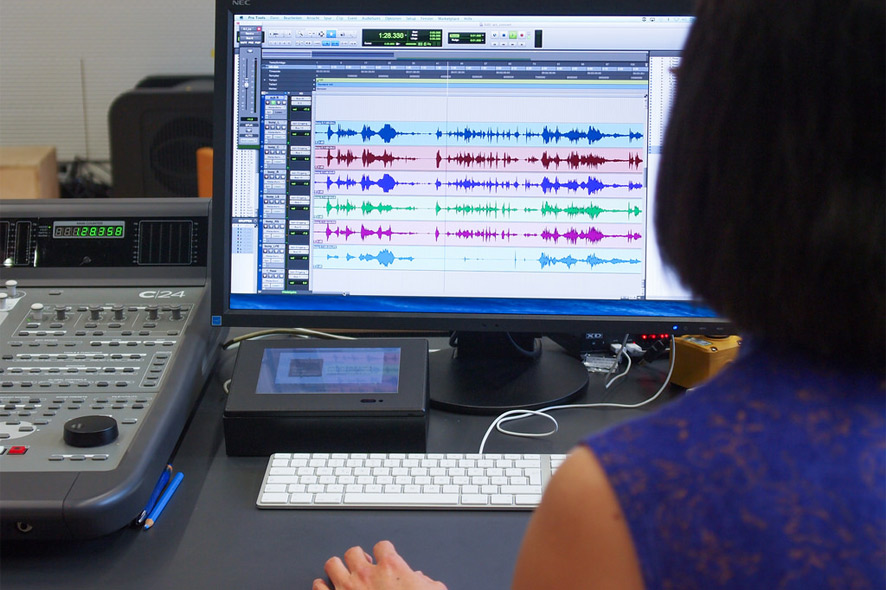
Credit: Martin Hieslmair
Festivalgoers will be able to experience what’s happening in computer music at a live concert on Sonic Saturday. Which artists have you lined up?
Andreas Weixler: One is Dorit Chrysler, who plays an instrument though not an acoustic one—the theremin, an old-fashioned, induction-controlled synthesizer. It can produce only one tone at a time, but the sound is exquisite and penetrating. The theremin is a very important instrument in the history of electro-acoustics, and Chrysler is one of today’s virtuosos. She’s very much looking forward to bringing her instrument into our space.
Volkmar Klien: The Steel Girls, Astrid Schwarz, Tobias Leibetseder and Angélica Castelló, have built an instrument of their own out of steel and iron. These are resonators they welded themselves, instruments that can then be electro-acoustically recorded and amplified. For one thing, you can create a synthesis in such a way that you construct something on the computer—for example, a virtual object—and then make it vibrate; another possibility is to build something yourself out of iron and then strike it, make it vibrate, stimulate it, and then record this, feed it into the computer and then maybe back into another metal cavity resonator with a loudspeaker that can be used as a filter, etc. It’s a sort of hybrid instrument that, for one thing, is very physical—that is, it’s just welded-together iron—but it’s also been extended into the digital world. The Steel Girls, undergrads at Bruckner, will play it live in concert.
Ludger Brümmer, the head of the studio at ZKM–Center for Art and Media Karlsruhe, will present an audiovisual work. Dante Tanzi is also coming by this year.
Se-Lien Chuang: Dante Tanzi is an Italian composer. Since 2012, he’s been performing works of the acoustic musical repertoire on the SATOR acousmonium at Centro San Fedele in Milan and on the AUDIOR mobile acousmonium. He and Eraldo Bocca founded the AUDIOR association. He produces with many different analog instrumental media, and normally composes pieces for stereo—that is, for two channels. He’s looking forward to trying out Sonic Lab’s 20.4 channels, and dispersing stereo across a multiplicity of speakers. He’s going to create a space and check out how it sounds with his composition. This is important to many artists—regardless of how many channels you’ve composed with, to have the opportunity for the music to unfold in Sonic Lab, to experience it in this space and to let it come alive.
Andreas Weixler: He does that live! The work is composed in detail but it’s structured in such a way that the different directions are easily heard, with many sound components.
Another special feature this year is that this is the first time we’re hosting residencies in the new facility. Jiayi Young and Shih-Wen Young from UC Davis will be visiting us in August to do research in the Sonic Lab, to create new pieces, and to engage in cooperation and exchange. In the Medium Sonorum concert, they’ll also be debuting a work that was partially developed here.
Volkmar Klien: Our final guest is Seth Cluett, an English sound artist & composer who teaches at Stevens Institute of Technology in Hoboken, USA. Seth Cluett will take part in the Kunstradio /Radiokunst symposium and also give a live 20.4 channel performance in which he’ll use electro-acoustic instruments as well as his own voice, which he’ll process in real time.
In addition to the evening concert, there’ll also be a Listening Room. What happens there?
Andras Weixler: The Listening Room took shape last year. We had so many ideas for the Medium Sonorum that there were actually too many, so we had to choose who would play live and which pieces would be heard throughout the day in the Listening Room. This year, the GEM–Society for Electro-acoustic Music released a collection of four CDs that are representative of Austrian music in this genre. The title is “30/4,” meaning 30 composers on four CDs, and the point is to showcase the breadth of Austrian electro-acoustic compositions. The idea is to play these four CDs in succession, so festivalgoers can go to the Listening Room at any time and hear them. We’ll close the Listening Room prior to the concert, so everyone can assemble in the Sonic Lab.
Se-Lien Chuang: The Listening Room will take place in the production studio, which is a miniature version of the Sonic Lab both with respect to architectural dimensions and technical infrastructure. The production studio is equipped with a 20.2 loudspeaker system. And there’s a video display providing information on what’s playing at the moment. The presentation of the GEM CDs in the Listening Room will show the entire spectrum of Austrian electro-acoustic compositions and how this genre has evolved over time.
And we’re also scheduling a guided tour in which Andreas Weixler and I will enable visitors to experience live performances and demos amidst the CMS’ striking architecture.
The final item on the program is the symposium. What highlights await us here?
Volkmar Klien: The symposium is entitled “Different Places – From Broadcasting to Transmitting to Processing” and is being produced in cooperation with Ö1 Kunstradio and its director Elisabeth Zimmermann. An initial focus on digital sound will serve as a point of departure for wider-ranging considerations. We’ll give a rough overview of the history of art radio/radio art which, from its very inception, has been closely intertwined with the Ars Electronica Festival. Kunstradio, Ö1, has long been an internationally renowned hotspot of radio-borne art, and has made a concerted effort to get away from hierarchical broadcasting and implement a communications space. And they got started with this back when the internet was still in its infancy! The last 30 years have witnessed a fundamental upheaval in our media environment. Now, we all live in an augmented world that was still a futuristic vision in the early days of Ars Electronica and Kunstradio. What we’re trying to do at the Different Places symposium is to bring together theoreticians with artistic practitioners. The concept is: Out of all these utopias and dystopias from the early days of media art and Kunstradio, what’s still relevant for us now? What’s more relevant than initially thought, and what didn’t turn out—at all or in part—the way a lot of people expected? Many very renowned people working in the field of sound art and radio art will be attending this symposium.

Volkmar Klien spent his childhood in Vienna, fascinated by musical life in that city with its glorious traditions and antiquated rituals. From this background, he now endeavors to expand the possibilities of composing, playing and listening far beyond classic concert situations. His interest in the multilayered interrelationships among various modes of human perception and the roles they play in the collaborative creation of reality has gotten him involved in a wide range of audible—and sometimes inaudible—artistry. His installation “Relative Realities” will run throughout the 2016 Ars Electronica Festival at the Mariendom [St. Mary’s Cathedral]. Volkmar Klien is Professor for Composition at Anton Bruckner Private University in Linz.
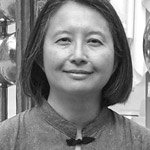
Se-Lien Chuang is a composer, pianist and media artist. She was born in 1965 in Taiwan and has lived in Austria since 1991. Her artistic work ranges from contemporary instrumental composition and improvisation, to computer music and electronic sound processing, all the way to audiovisual interactivity. She has studied composition (Beat Furrer), music & media technology (Karlheinz Essl), piano, the recorder and electro-acoustic music in Austria. Her international productions, research stays, speeches and numerous performances of her works have taken her throughout Europe as well as to Asia and North & South America, including: the Salzburg Festival, Wien Modern, Ultraschall Festival Berlin, ICMC Utrecht/Athens/Perth/Ljubljana/ Huddersfield/NYC/Belfast/Copenhagen, SICMF Seoul, NYCEMF, NIME Louisiana/New York City, ISEA Hong Kong/Singapore/Nagoya, IAMAS Japan, Ars Electronica Linz and the SONORITIES Festival Belfast.
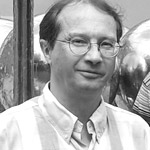
Andreas Weixler was born in 1963 in Graz. He’s a composer of contemporary instrumental and computer music with a particular emphasis on audiovisual interactivity, random virtuosity and interactive scores. He is a professor at Anton Bruckner Private University, where he initiated the development of the Computer Music Studio and the Sonic Lab, the intermedial multi-channel concert hall for computer music. He’s also an instructor at Linz Art University and University of Music and Performing Arts Vienna. Following his studies in Graz with Dobrowolski, Pagh-Paan and Furrer, he worked on numerous projects, studied abroad and performed research. Andreas Weixler launched the Intermedia concert series at the Ars Electronica Center Linz and operates (together with Se-Lien Chuang) the Atelier Avant Austria.
Music and Sound Art at the Ars Electronica Festival, September 7-11, 2017
With its extensive lineup of superb concerts, performances, speeches and discussions, the Festival has long been a major attraction for music fans too. In addition to Sonic Saturday, the Big Concert Night on September 10th in POSTCITY is another don’t-miss highlight. Deep Space 8K in the Ars Electronica Center will host a series of audiovisual presentations as well as an evening program—Opening, Nightlines and OK Night—designed to ring out each day of the Festival on a high note. Music Monday, the last day of the Ars Electronica Festival, has also established itself as a mainstay of this conclave with an entire day dedicated to music and sound art. Speeches and presentations, performances, workshops and concerts provide audible insights into sound projects that were produced over the course of the Festival.
To learn more about the festival, follow us on Facebook, Twitter, Instagram et al., subscribe to our newsletter, and check out our website at https://ars.electronica.art/ai/en/.
